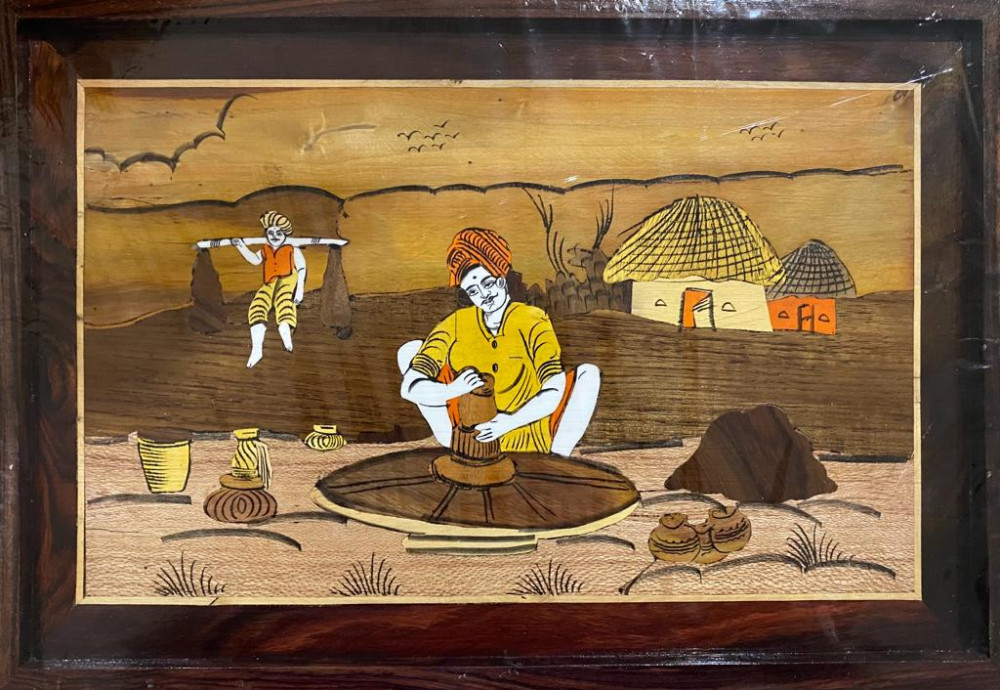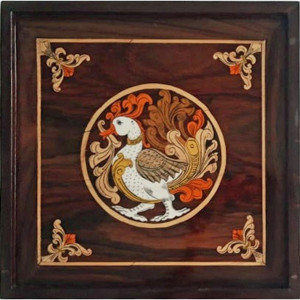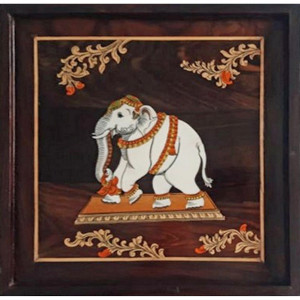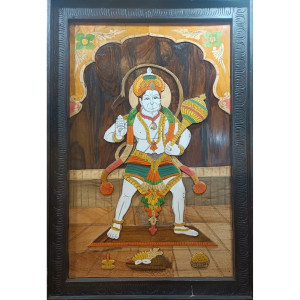Traditional Handicraft Mysore Rosewood Inlay Wooden Painting Of Man making Pottery
The Traditional Handicraft Mysore Rosewood Inlay Wooden Painting portrays a skilled craftsman shaping pottery with intricate detail. Crafted in Mysore, India, this exquisite art piece features rich rosewood inlay work that highlights the artisan's precision. The scene captures the essence of traditional craftsmanship, showcasing the potter's expertise in molding clay into a beautiful piece of art. The warm tones and fine woodwork create a captivating contrast, making it a remarkable display of Indian cultural heritage and artistic finesse. This wooden painting beautifully captures the essence of traditional pottery-making, celebrating the artistry of skilled hands.
- Product : Painting
- Material Used : Rose Wood
- Color : Colorful
- Item Design : Beautiful pottery-making
- Size : 13 x 19 inch
- Weight : 3 Kgs
- Ideal For : Decoration & Gifting purpose
Princely state of Mysuru is a home for several arts and crafts. During the reign of last king Jayachamaraja wodeyar several arts and crafts were practiced by proficient artists. One such beautiful craft was the Ivory inlay in the rosewood (which was available in abundance locally). Over the years and with the creative efforts of the artists this beautiful and rich craft of rose wood inlay has evolved into a more colorful ensemble work with layers of variety of natural wood.
The original Rosewood inlay was done with ivory and deer horn. Since the time ivory and deer horn was banned in India it has been replaced by white and beige plastic/acrylic. Plywood is used for base frame and rosewood for Panel. A variety of different color woods are used for the inlay like White Cedar, Rosewood, Chill pine, Rubber wood, Red sandal, Jackfruit wood, blue wash, champa, Patanga ( imported from Kerala) silver wood etc. The colors from these wood are bright orange, yellow, blue shades, brown, dark brown and maroon. The process of this craft work starts with purchasing, cutting and seasoning of the wood. Six to nine people each specialized in specific part of the entire making of rosewood inlay come together to create one piece in four to five days. They use simple tools like hand drills, Tagad (scraping tool), Hare (hammer) Ambor (Plier) and bowor hex saw.
The design of the art piece is first finalized, drawn on a paper with appropriate colors marked on the drawing. Then small sections are traced on separate papers to use them as stencils. These then are stuck on wood and are cut by the outline with the help of a hex saw. These pieces of various colored wood are then arranged referring to the initial drawing and are glued together using PVA Glue. The work piece is scooped using a chisel, inlayed and then rubbed using several grades of flint papers in order to bring all the pieces to the same level. Then the carpenter does his job of putting them in the frame and joinery work is completed. Fine grooves are made using a chisel to give detailing. A mixture of molten wax and charcoal is applied to the surface of the work piece by a brush made of cloth and then scrapped by a chisel thus wax remains in the groves leaving the rest of the surface clean. Final finishing is done to obtain a finished wood inlay painting. Thus a teamwork of six to nine and a process comprising seven stages: Designing and drawing, carpentry, hand cutting and shaping of motifs, scooping the exact pattern on the rosewood surface, fixing and inlaying followed by sand papering, polishing, engraving the details and the final finish produces an astounding unparalleled craft work which successfully captures essence of rural life, Celebrations of local festivals, Royal weddings, Dusshera processions, Nature , flora, fauna , inscriptions of Islam, Islamic floral and vine motifs, Cristian and Hindu gods and goddess etc and all the colors from the natural wood literally bring life to the Rosewood Inlay work.

 INR
INR USD - $
USD - $
 CAD - Can$
CAD - Can$
 EUR - €
EUR - €
 GBP - £
GBP - £
 SGD - S$
SGD - S$
 AUD - A$
AUD - A$
 MYR - (RM)
MYR - (RM)











